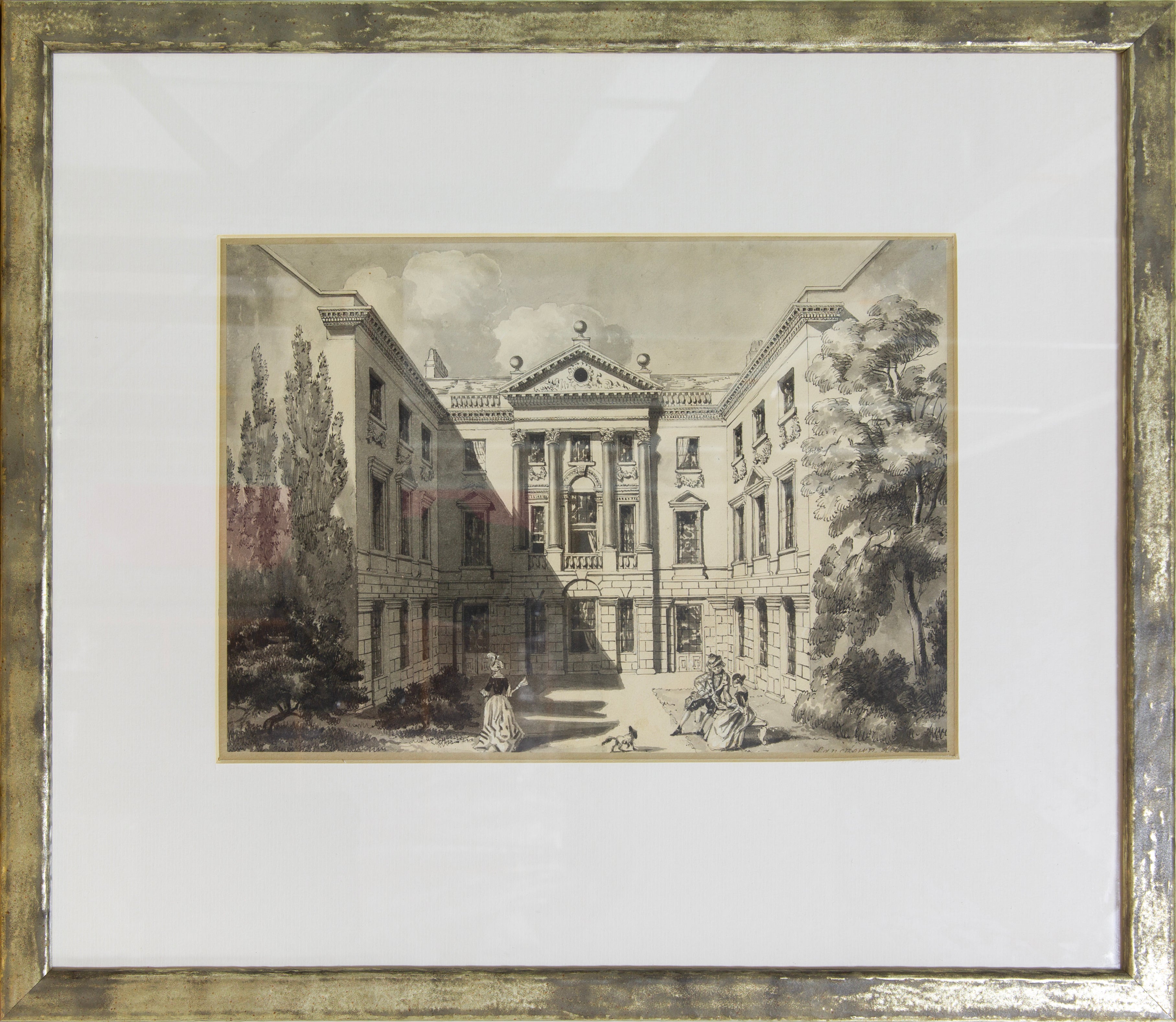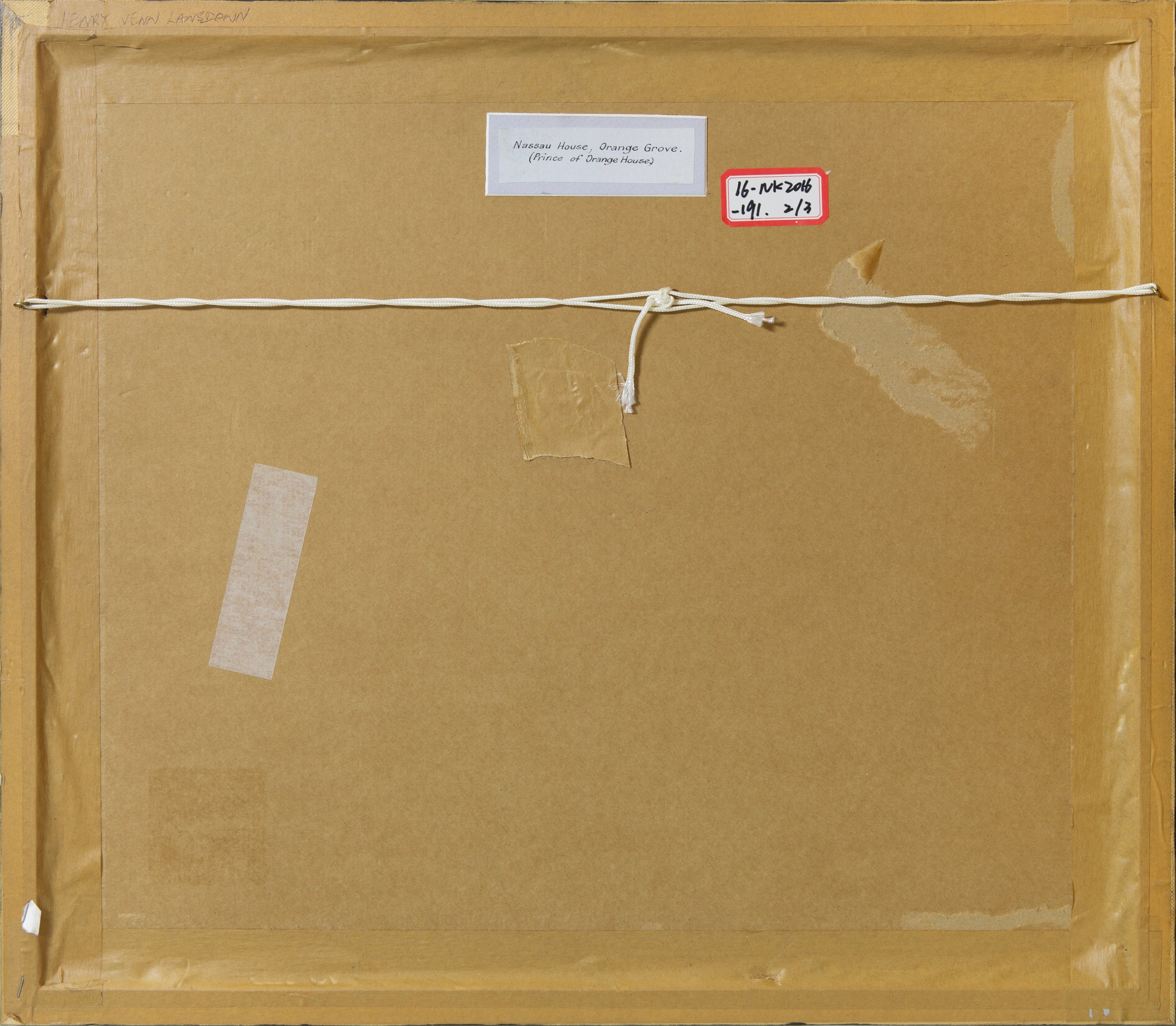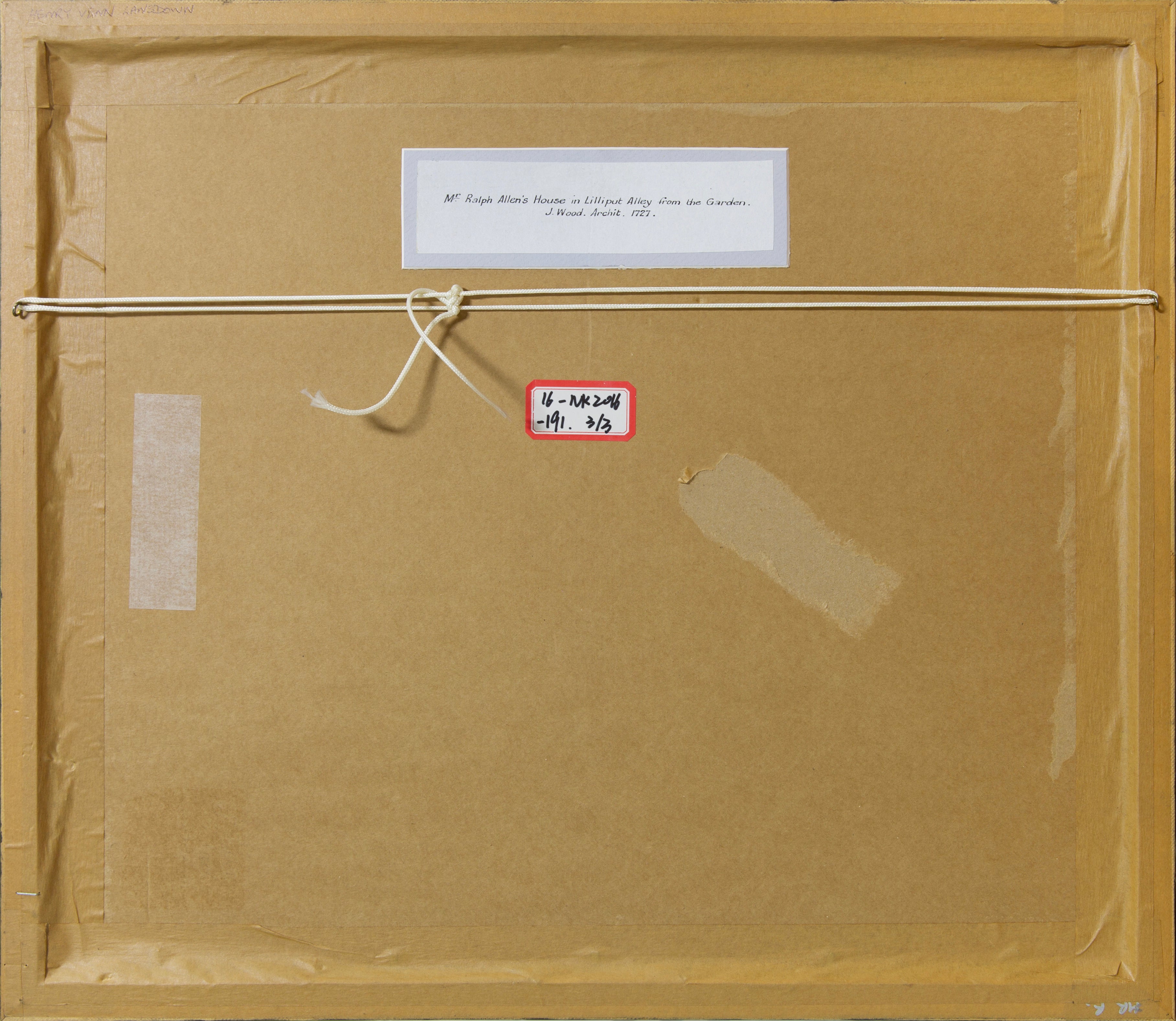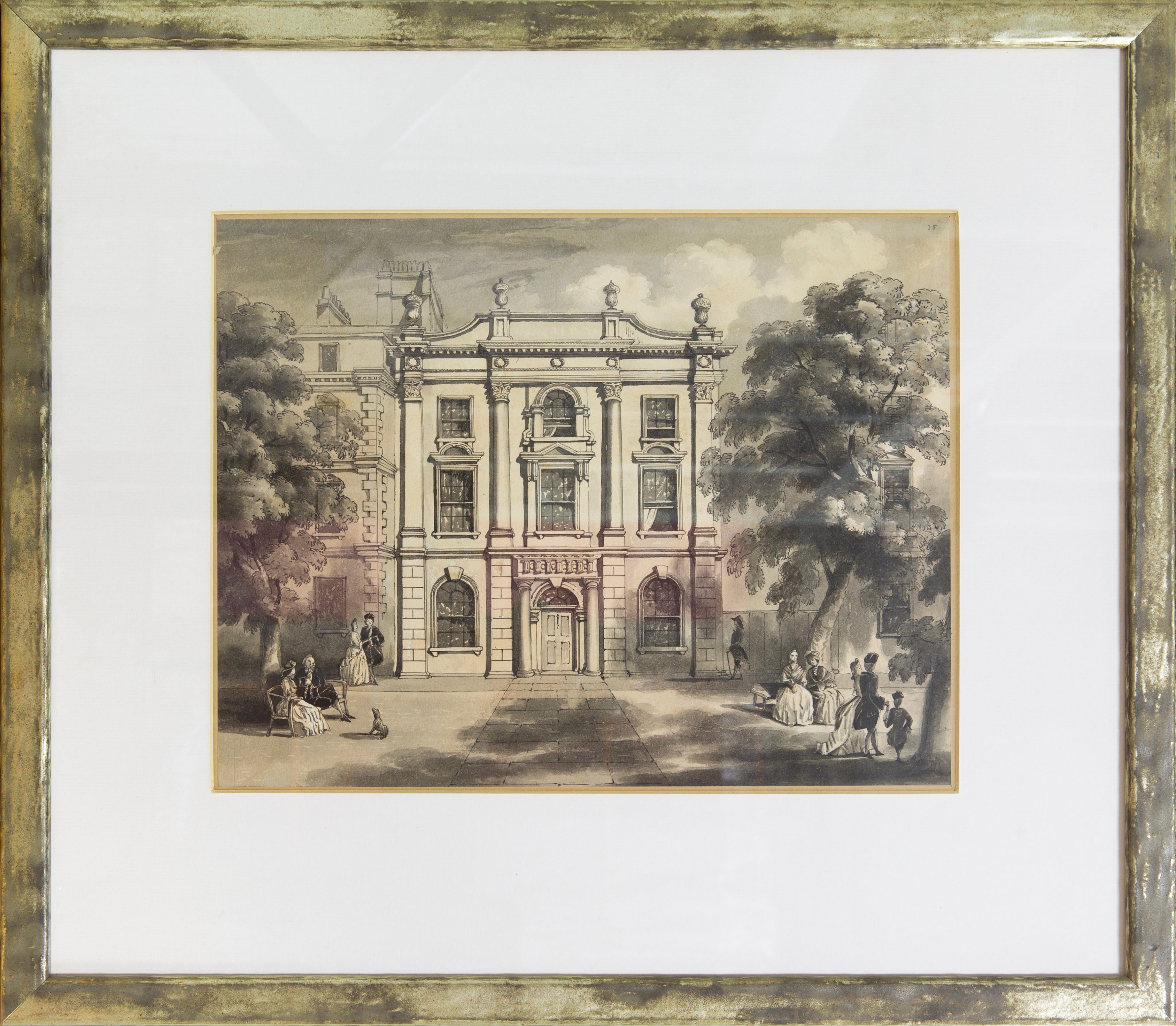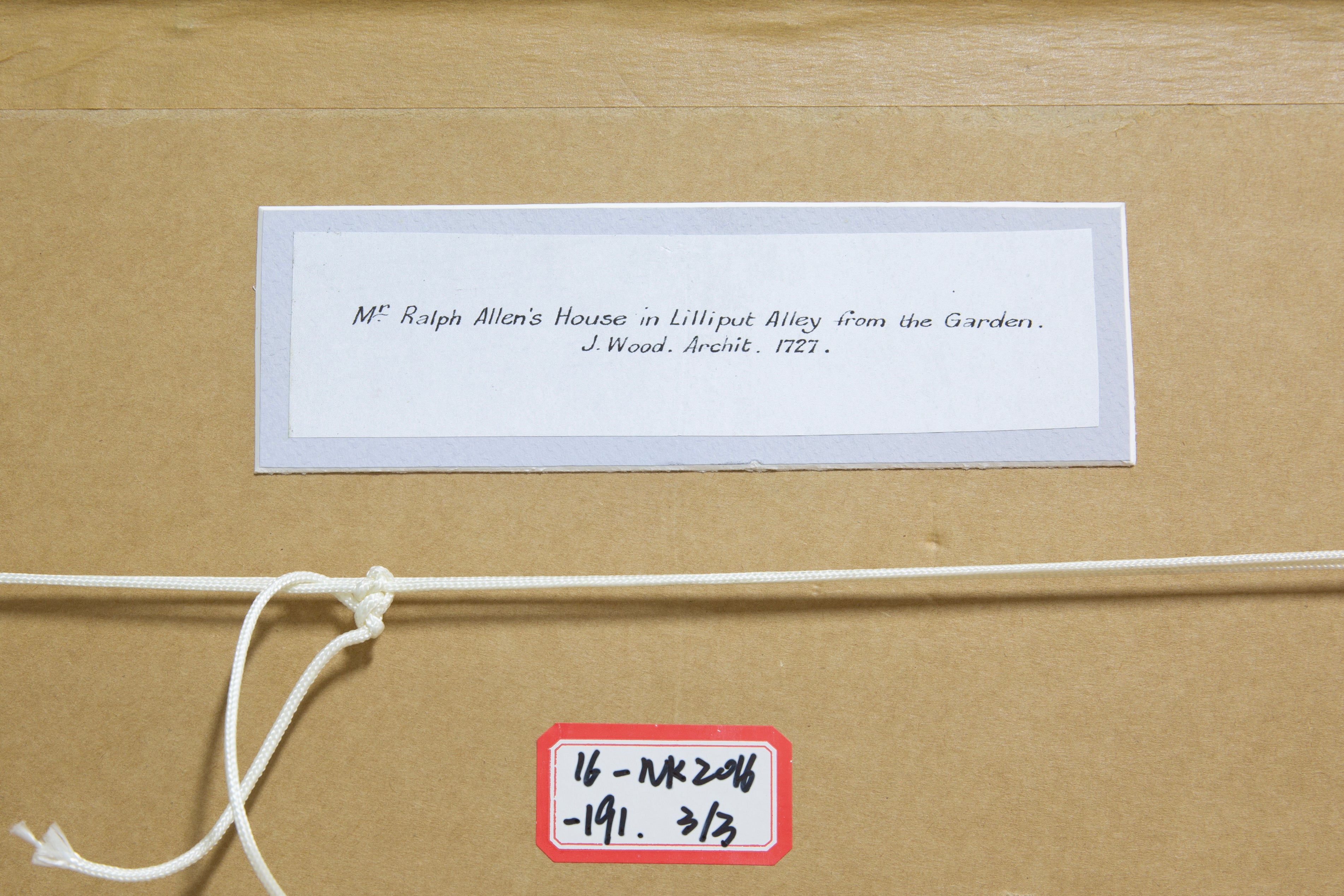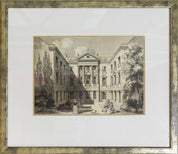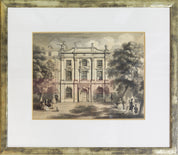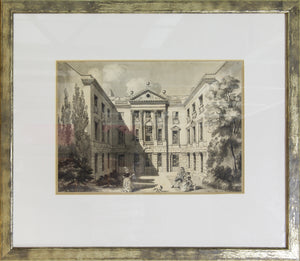Queen's Square Chapel, Bath; Nassau House, Orange Grove (Prince of Orange House); Mr. Ralph Allen's House in Lilliput Alley from the Garden. J. Wood. Archit. 1727
Henry Venn Lansdown (1806-1860)
Artwork Details
Artwork Description
Title:Queen's Square Chapel, Bath; Nassau House, Orange Grove (Prince of Orange House); Mr. Ralph Allen's House in Lilliput Alley from the Garden. J. Wood. Archit. 1727
Artist
Henry Venn Lansdown
Date
n.d.
Medium:
Work on paper
Dimensions
Each 10.9 x 14 in (27.7 x 35.5 cm), triptych
1. Artwork Identification
This elegant triptych features three architectural studies by 19th-century English artist Henry Venn Lansdown, each capturing historic Georgian buildings in Bath, Somerset. Executed with delicate precision on paper, these works depict: Queen's Square Chapel, the Nassau House in Orange Grove (also known as the Prince of Orange House), and Mr. Ralph Allen’s House in Lilliput Alley as seen from the Garden. Each composition presents a balanced view of the classical façades and surrounding landscape, enlivened with period figures in genteel attire. The works are uniformly mounted and framed under glass with gold-toned frames. All three pieces are in very good condition.
2. Artistic Style and Influences
Lansdown’s architectural renderings belong to the tradition of topographical and documentary illustration prevalent in 19th-century Britain. His works exhibit a neoclassical clarity of line, a restrained palette, and a romantic sensitivity to atmosphere, influenced by both the architectural engravings of Piranesi and the refined illustrative practices of the Georgian and Regency periods. The careful articulation of architectural details—entablatures, Corinthian columns, and rusticated masonry—demonstrates his rigorous attention to the heritage of Palladian design as championed by Bath architect John Wood the Elder.
3. Historical Context
Henry Venn Lansdown (1806–1860) produced numerous views of Georgian and Regency architecture in Bath during a time of growing antiquarian interest in England's architectural past. The subjects of this triptych—iconic Bath structures designed in the 18th century—reflect the Palladian ideals that defined the city's golden era. John Wood the Elder, credited as architect on the third work, was a central figure in Bath's urban development. By the time Lansdown recorded these facades, Bath had become not only a fashionable retreat but also a symbol of England’s architectural heritage. These drawings serve as visual documents of preservation and pride.
4. Provenance
Provenance documentation can be provided upon contact.
5. Condition and Conservation
All three works are in very good condition. The paper remains stable and the pigments retain their clarity. There are no notable stains, foxing, or abrasions. Each piece is matted and framed uniformly, offering a cohesive visual presentation suitable for display. The frames show minor wear consistent with age but remain structurally sound.
6. Artistic Significance
Lansdown’s triptych offers a rare and refined glimpse into the architectural heritage of Bath, rendered with both scholarly care and artistic elegance. These drawings stand as valuable records of urban history and exemplify a 19th-century reverence for Palladian architecture. As both historical artifacts and works of aesthetic merit, they appeal equally to collectors of architectural drawing, Georgian topography, and British cultural heritage.

